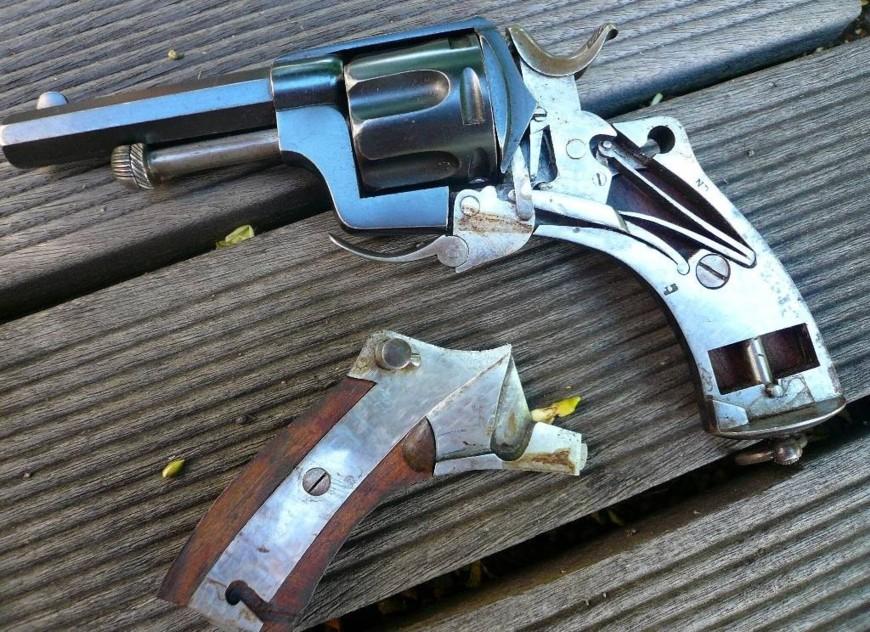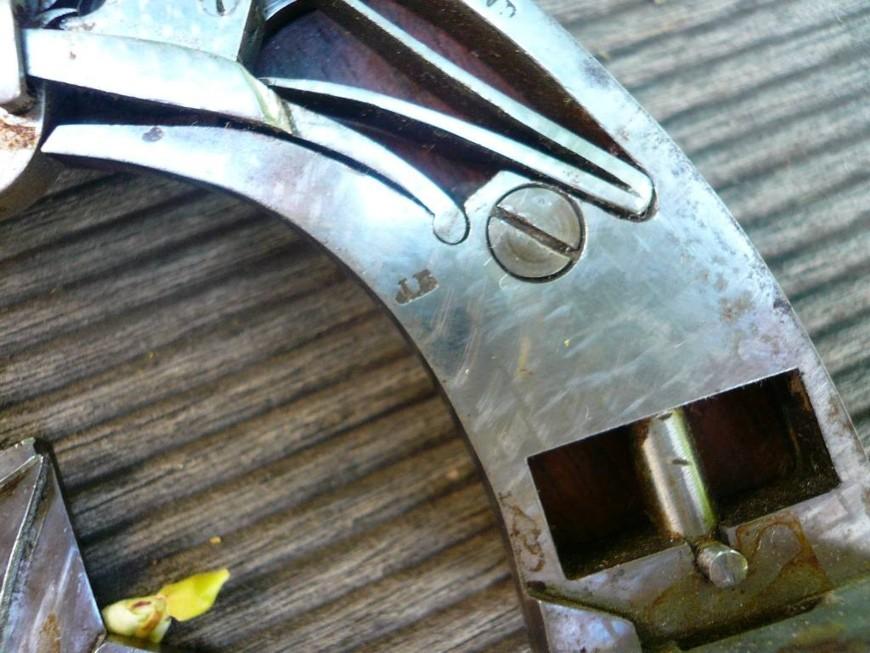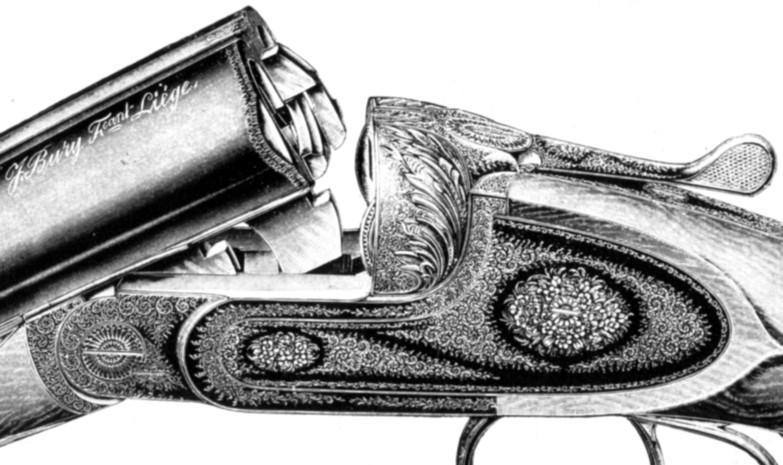Some of the most beautiful work of this craftsman, and many others, are in this book “Liège Gunmakers through their Work. 1800 - 1950”.
For more detail see: LIEGE GUNMAKERS
Bury Jules
Superb
precision rifle in 22 caliber long.





Bury Jules
It is about a shotgun of the hammerless type. The two
unrifled bores are juxtaposed. Locks are of type “ahead” with animalist
engraving (pheasants - stag) signed “O.V”
This engraver (inhabitant of Liège of the beginning XXe century?) do not appear
unfortunately in my documentation. The stick of walnut is worked “with English”.
This weapon carries the lawful punches of the
proofhouse of
ELG* in
a crowned oval:
final acceptance, of use of 1893 to 1968.
16C in a
rhombus:
gauge, of use of 1898 to 1924.
Peron:
inspection, of use of 1853 to our days.
EL in
English letters:
provisional test, of use of 1852 to our days.
S* - AB*
- M*:
countermarks of the controllers, of use of 1877 to 1968.
PV
surmounted of a stylized lion:
test with the powder without smoke. In use of 1898 to 1968.
P
1.K.206.2:
weight of the barrel which can draw from the powders without smoke (smooth
weapons). In use of 1892 to 1924.
D= 70
m/m /18.9:
length of the room in mm and diameter in mm after optional test with the powder
without smoke. In use of 1892 to 1924.
Choke
18.2 (?) 17.1:
chokes barrels, gauged in mm to 22 cm of the breech and the mouth. In use of
1898 to 1910.
The
weapon also carries the following marks:
6661:
J.
BURY Arquebusier in
GG







Jules Bury



Jules Bury
The weapon
Revolver with central percussion and box frame.
The cylinder with 6 rooms is grooved, the calibre is .320.
The rifled bore is with 8 sides with back sight in half-moon.
The loading is practiced by the right side door rocking towards the back thanks to the action of an internal spring.
Disarmament is done using the metal with head knurled and sliding rod in a guide.
The trigger without trigger guard is curved and smooth.
The lower face interns stick is equipped with a push-button allowing the unhooking of the left plate to give access to the internal mechanism.
The stick consist of two plates out of wooden (walnut) squared reserves by a transverse screw and two rivet washers with ears.
Punches
The weapon carries the lawful punches of the profhouse of Liege, namely:
ELG on star in a vertical oval: final acceptance, of use of 1846 to 1893.
X spangled: countermark of the controller post 1877.
Marks
Crowned JB: (read partially unobtrusive bus so well) this mark could be that of the manufacturer of weapons Jules BURY, Lemonnier passage, 11 in LIEGE. Registered voter with the proofhouse of 1896 to 1947.
DJ: mark unknown, could belong to a subcontractor.
GG







And here is another which had been announced to us as “Baby 1874 French” but which is quite Belgian and rigorously the same one as that above!!








BURY
The gun on photographs seems to be a hammerless shotgun with two (smooth bore?) juxtaposed barrels. Top key, Greener bolt.
STAMPS: not visible on the photographs!
MANUFACTURER: according to the stamp on the barrels J BURY, arquebusier in Liege passage Lemonnier, 11.
He was registered with the Liege Proof House from 1896 to 1947.
He founded Etablissements BURY-DONCKIER 11-13 passage Lemonnier in Liège (1947/1964).
It was specialized in hunting guns and ammunition.
In 1964, the company was bought by Charles MASQUELIER (see site)
Catalogue: see example below.
GG




Catalogue Bury





